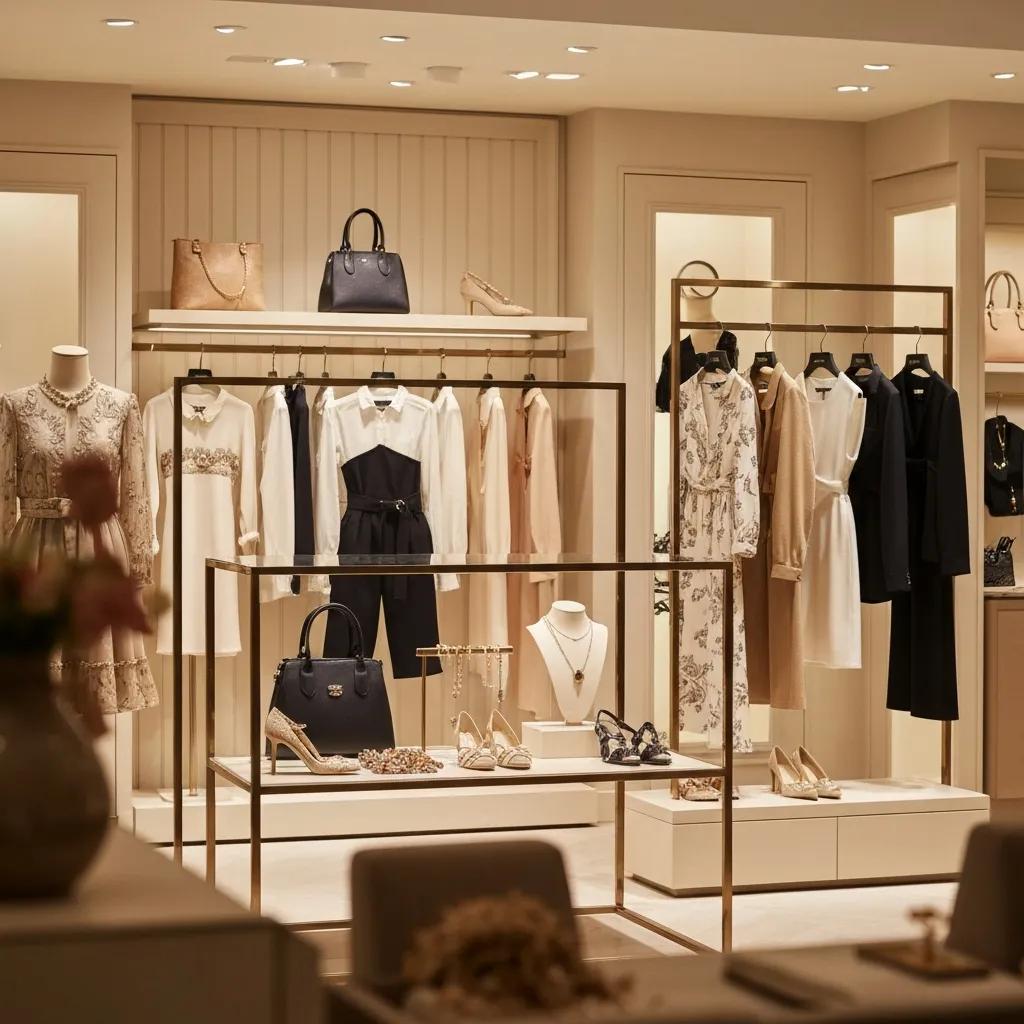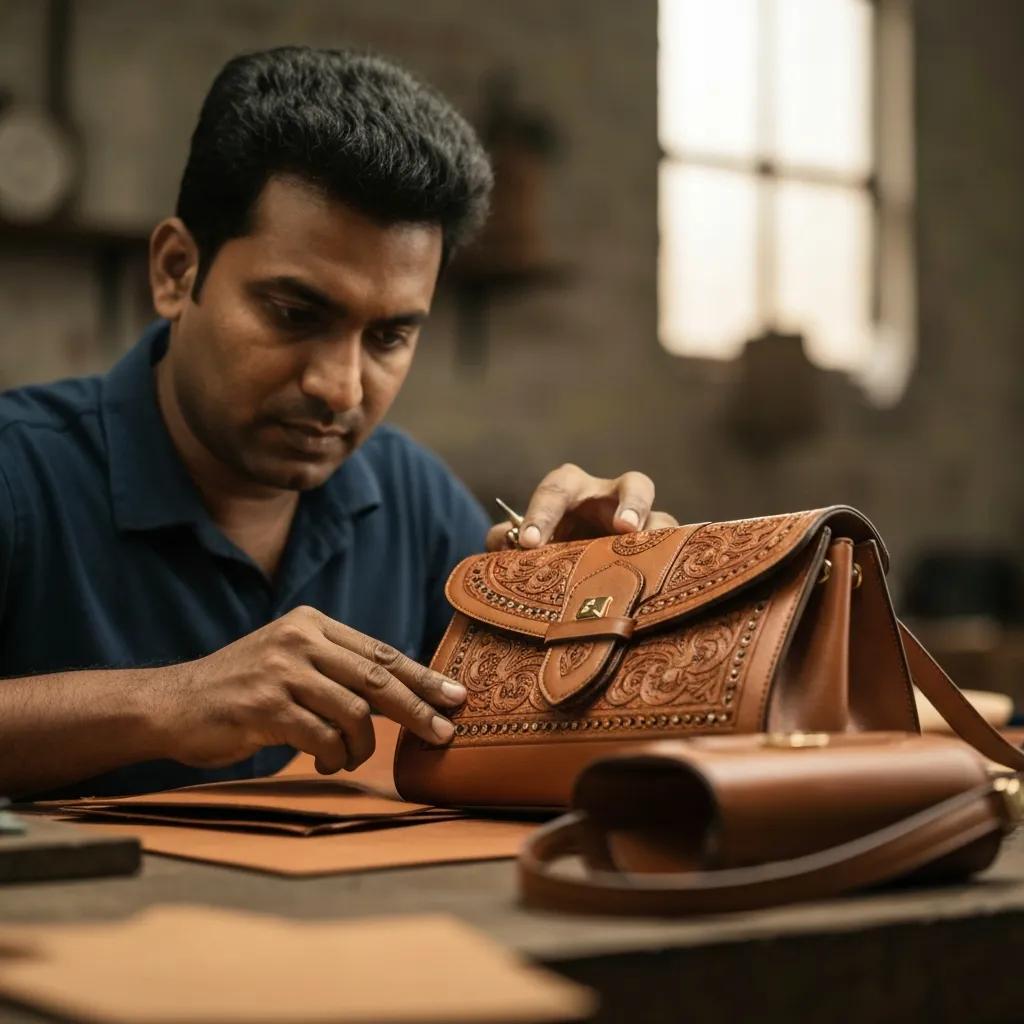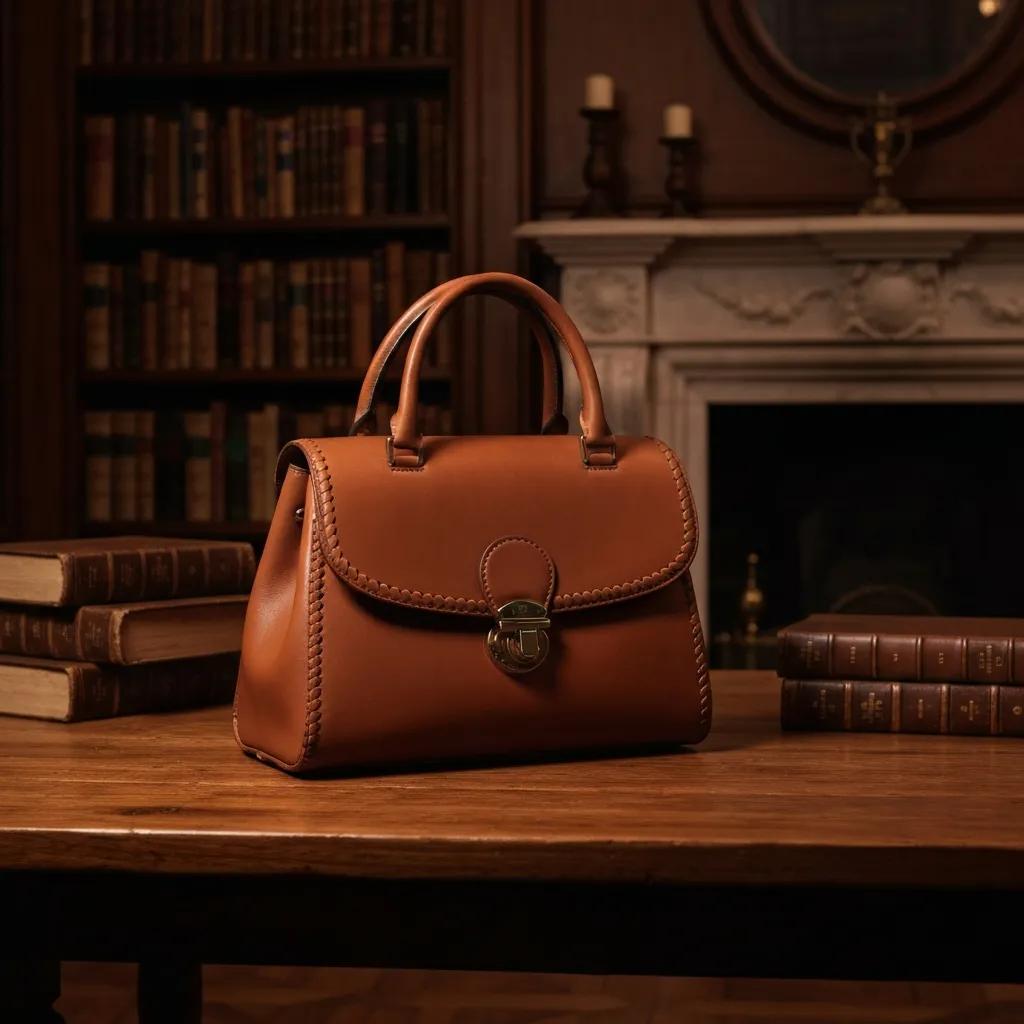Understanding the Key Factors That Shape Pricing in Designer Fashion Collections: Luxury Fashion Pricing Factors and Value Explained

Designer fashion pricing reflects a blend of tangible costs, intangible value, and market dynamics that together determine how much a luxury item sells for and why. This guide breaks down the mechanics behind pricing—materials, craftsmanship, brand equity, development, go-to-market costs, consumer psychology, and macro trends—so readers and buyers can understand price formation and make informed decisions. By defining core drivers like materials (gemstones, precious metals, leather), craftsmanship, marketing spend, and perceived exclusivity, the article shows how each factor contributes to the final retail tag and how value is communicated. Understanding these components helps shoppers assess whether a given price represents true quality, scarcity, or simply marketing markup, and it helps designers and retailers set defensible prices. The sections that follow examine material and production costs, brand legacy and scarcity effects, design and R&D expenses, marketing and operational overheads, psychological pricing drivers, and the 2025 market context shaping contemporary luxury pricing.
What Are the Main Material and Production Costs Influencing Designer Fashion Pricing?

Material and production costs are the foundational, measurable inputs that set a floor under retail prices; they include raw gemstones and metals, leather grade, hardware, labor, and factory overhead. These costs determine direct COGS (cost of goods sold) and vary by material rarity, metal weight, gem carat and quality, origin of leather, and the level of artisanal labor required. High-quality materials and hand-finished construction increase per-unit cost and also support higher perceived value, which brands can translate into a premium. Understanding these inputs clarifies why two similar-looking pieces can carry very different price tags depending on their components and production route; the next section illustrates specific product attributes and how they map to SKU value.
The following table shows example product-level attributes and how they contribute to material-driven pricing decisions for jewelry and accessories.
| Product or SKU Example | Material Attribute | Typical Value Contribution |
|---|---|---|
| 4.5ct lab-grown emerald cut ring | Gemstone: lab-grown diamond 4.5ct; Metal: 14K white gold | Gem accounts for major material cost; metal and setting add moderate cost |
| 14K yellow gold lab diamond necklace | Gemstone: lab-grown diamond melee; Metal: 14K yellow gold | Necklace metal weight and diamond grading drive price; craftsmanship adds markup |
| Designer leather handbag (example grade) | Leather: full-grain leather; Hardware: brass/zamak; Lining: silk blend | Leather grade and hardware quality are primary cost drivers; finishing increases value |
This EAV-style table links concrete attributes to typical cost influence so readers can see which element moves price the most. The table clarifies that gemstones and leather are not the only cost drivers; metal weight, hardware, and finishing meaningfully shift SKU economics and the following subsection compares lab-grown stones to natural alternatives.
How Do Lab-Grown Diamonds Compare to Traditional Diamonds in Pricing?
Lab-grown diamonds shift several traditional cost drivers by removing mining-related overhead while adding controlled manufacturing and certification steps, which changes price structure and consumer messaging. Production of lab-grown stones typically reduces supply-chain variability and can lower material cost compared with mined diamonds, enabling retailers to price items more competitively while maintaining gem-quality specifications. Perceived value and resale dynamics differ, however: many buyers still attribute higher long-term value to natural stones, so lab-grown pieces often compete on ethical messaging, traceability, and price-performance. Recent market shifts show lab-grown stones enabling designers to offer larger-carat pieces or more elaborate settings at accessible prices, and that practice is visible in current product assortments that balance size, cut quality, and metal selection.
This comparison leads naturally to another core material category in designer pricing: the sourcing and grade of leather used in handbags and accessories.
What Role Does Quality Leather Sourcing Play in Handbag Cost Breakdown?
Leather grade and tanning method are central to handbag cost and durability, with full-grain and top-grain leathers commanding higher prices than corrected-grain or bonded options because of natural characteristics and longevity. Origin and tanning—vegetable vs. chrome tanning—affect both material costs and environmental footprint, and premium hardware, lining materials, and stitching technique further elevate production expense. Small-batch or artisanal leatherwork increases labor costs and reduces economies of scale, justifying higher retail prices through durability and provenance. Understanding leather specification helps buyers value a handbag beyond its silhouette, and the next section examines how brand equity and scarcity translate those material investments into premium pricing.
How Does Brand Legacy and Exclusivity Affect Designer Collection Prices?

Brand legacy and perceived exclusivity create powerful intangible value that often outweighs material costs when consumers determine willingness to pay. Heritage, storytelling, signature motifs, and high-profile collaborations can add a multiplier effect to base COGS, meaning brand equity often represents a substantial portion of final retail price. Scarcity—limited editions, numbered pieces, or time-limited drops—generates urgency and social signaling that allow brands to command higher margins without altering production inputs. These intangible drivers operate through narrative, provenance, and visibility, and they are essential levers for designers and retailers who wish to set premium positioning for collections.
The following list outlines core brand premium drivers that commonly explain why designer pricing diverges from material-only cost models.
- Heritage and provenance: a brand story that signals authenticity and craft.
- Scarcity and limited editions: controlled supply increases perceived rarity.
- Collaborations and celebrity associations: cultural relevance that boosts desirability.
- Signature design language: distinctive motifs that enable instant recognition.
These brand activities convert craftsmanship and materials into symbolic value that customers pay for, and the next subsection shows how a retailer can combine these elements to justify premium pricing while maintaining perceived value.
How Does Behrs.shop Build Brand Value to Justify Premium Pricing?
Behrs.shop positions its assortment through curated designer imports, handcrafted product descriptions, and special savings that together communicate premium curation and accessible luxury. By emphasizing elegantly handcrafted items and highlighting discounted pricing on select designer pieces, the retailer balances exclusivity with value messaging that can broaden appeal to both collectors and value-conscious luxury shoppers. This positioning supports premium pricing for items where provenance and craftsmanship are clear, while limited-time savings help convert browsers without eroding long-term brand equity when applied selectively. For customers evaluating high-value pieces, product pages that describe material attributes, craftsmanship, and ethical sourcing strengthen the story that justifies higher retail tags.
This discussion of brand-building provides context for scarcity effects, which are examined next to explain why limited runs increase markup opportunity.
Why Do Limited Editions and Scarcity Increase Designer Fashion Prices?
Limited runs and numbered editions increase perceived collectability and create urgency, allowing brands to charge a premium because supply is intentionally constrained while demand remains high. Scarcity taps into social signaling: owning a rare piece confers status and distinction that many buyers are willing to pay for beyond material value. From a business perspective, limited editions reduce markdown risk because rarity preserves secondary-market interest and can support higher initial margins. Designers balance scarcity with accessibility by releasing curated capsules and rotating core assortments to maintain both exclusivity and steady revenue.
This strategic use of scarcity leads into the next major cost category designers must manage: development, innovation, and design expenses that produce unique collections.
What Are the Design, Innovation, and Development Expenses Behind Luxury Apparel Pricing?
Design, innovation, and development expenses are upstream investments that shape a collection's uniqueness and ultimately influence price through perceived originality and differentiation. These costs include designer fees, pattern-making, prototyping, sampling, textile sourcing, and the amortized expense of creative direction across a limited SKU set. While these items may represent a modest percentage of direct production cost, their impact on perceived value can be substantial because originality and craftsmanship drive desirability and justify premium margins. Allocating R&D and sampling costs across expected volumes influences pricing decisions, and the next subsections explore how originality and forecasting affect that allocation.
Design originality is a key competitive advantage that often allows a higher markup because distinctive elements create brand identity and consumer demand. Original motifs, bespoke trims, and patented details require creative investment and multiple sampling rounds, which increase pre-production costs that designers must recover through retail pricing. The premium for originality comes from scarcity of the idea itself and customer willingness to pay for signature design language, making investment in originality a critical part of a long-term pricing strategy.
Accurate research and trend forecasting mitigate inventory risk and guide pricing by informing SKU selection and expected demand profiles. Forecasting tools and market intelligence allow teams to prioritize pieces that justify higher price points and to reduce markdown exposure by limiting production on lower-demand styles. By aligning development spend with predicted consumer interest, brands can protect margins and avoid overproduction—an increasingly important consideration in 2025 market conditions that favor targeted assortments. The next section turns to the operational and marketing costs that also feed into retail price formation.
How Do Marketing, Distribution, and Operational Costs Influence Luxury Fashion Prices?
Marketing, distribution, and operational overheads are the commercial levers that convert product into sales, and they form a measurable portion of luxury pricing alongside material and design costs. Advertising, content production, influencer partnerships, platform fees, fulfillment, returns management, and customer service each add to per-SKU cost or margin pressure; in luxury contexts, marketing can represent a double-digit share of the price. For e-commerce retailers, logistics and fulfillment costs—including shipping, customs, and reverse logistics—must be priced into SKUs or managed via shipping policies and minimum order thresholds. The table below summarizes key operational categories and typical retail impacts for an online boutique model.
| Operational Area | Attribute | Value or Typical Impact |
|---|---|---|
| Marketing & Advertising | Channels: paid social, influencer, content | Often 10-20% of retail price in luxury channels |
| Distribution & Fulfillment | Inventory, shipping, customs, returns | Variable cost that affects margin and shipping policy |
| Platform & Support | E-commerce fees, customer service, warranties | Fixed and variable overheads that are allocated per SKU |
This EAV table highlights the categories retailers must manage and how each contributes to price formation and margin management. The next paragraph outlines specific digital marketing strategies that drive acquisition cost and therefore influence final price.
What Digital Marketing Strategies Affect Designer Fashion Pricing?
Digital marketing strategies determine acquisition cost, audience reach, and the quality of demand, all of which directly influence the price a brand must charge to remain profitable. Paid social campaigns and high-production editorial content raise cost-per-acquisition but build brand equity and visibility, while influencer partnerships create cultural relevance that can support premium pricing. SEO-driven content and email retention reduce long-term acquisition costs by converting organic traffic, and these channels are essential for maintaining margin flexibility. Brands allocate spend across these channels based on expected lifetime value, and understanding channel ROI helps explain why some items carry hefty marketing-driven markups.
These marketing realities bring attention to the role of user experience and service in supporting price acceptance for online luxury buyers.
How Does the Online Shopping Experience Shape Pricing Perception?
A premium online shopping experience—high-resolution imagery, clear product storytelling, transparent policies, fast and reliable fulfillment, and white-glove customer service—reduces perceived risk and enables higher price acceptance. UX investments translate into higher conversion rates and justify part of the premium because customers value clarity on materials, sizing, and returns when purchasing high-ticket items online. For e-commerce retailers, guarantees, clear certification of materials, and frictionless checkout create trust that supports price points above commodity levels. Delivering service that matches product quality is therefore an operational investment that feeds back into pricing strategy and customer loyalty.
After explaining these operational components, the article now examines how consumer psychology and perceived value determine the final willingness to pay.
How Does Consumer Psychology and Perceived Value Drive Pricing in Designer Fashion?
Consumer psychology—status signaling, identity expression, emotional attachment, and perceptions of authenticity—greatly influences willingness to pay and often allows brands to charge significantly above material cost. The Veblen effect explains why demand can rise with price for certain luxury items because higher price itself signals exclusivity and status. Emotional narratives about craftsmanship, ethical sourcing, or designer story create connections that transform material attributes into symbolic value. Brands that align price with clear, believable value propositions—materials, provenance, and service—are more likely to command sustained premium pricing. The next subsection breaks down status signaling mechanics and how they affect price elasticity.
Below is a short list of psychological drivers that commonly elevate perceived value for luxury items.
- Status signaling: visible cues that convey wealth or taste.
- Authenticity and provenance: origin stories and craftsmanship that build trust.
- Emotional attachment: narrative that creates personal meaning for buyers.
- Ethical alignment: sustainability and responsibility that justify premiums.
These drivers are central to pricing strategy because they change how consumers evaluate price relative to personal and social value. The following subsection examines status signaling in more depth.
Why Is Status Signaling Important in Luxury Fashion Pricing?
Status signaling is critical because visible design elements—logos, unique silhouettes, recognizable hardware—allow owners to communicate identity and social standing, which in turn raises willingness to pay and price elasticity for certain segments. Consumers who prioritize social distinction value those visible cues more than intrinsic material quality, enabling brands to charge premiums for highly visible design language. Conversely, buyers focused on craftsmanship and materials respond more to quality cues than overt logos, which implies a need for segmentation in pricing and communication strategies. Understanding this segmentation allows designers to price visible-luxury lines differently from quietly crafted, heritage-focused collections.
Translating psychological value into concrete product choices requires ethical and transparent messaging, especially for material decisions like lab-grown diamonds and responsible leather.
How Does Behrs.shop Align Price and Value for Ethical Luxury Consumers?
Behrs.shop integrates ethical value drivers by featuring lab-grown diamond jewelry and curated imports that emphasize craftsmanship and transparent product descriptions, helping align price with responsible sourcing and value-conscious luxury preferences. By presenting items such as lab-grown diamond rings and gold diamond necklaces with clear material attributes, the retailer supports buyers who prioritize ethical considerations and traceability over traditional mined-gem premiums. This approach helps justify pricing to a segment of consumers willing to pay for both design and responsible sourcing, while curated special savings make ethical-luxury options accessible without undermining perceived value. Such alignment between product attributes and messaging builds trust and reduces resistance to premium price points.
With consumer psychology and ethical alignment considered, the final section examines the 2025 market trends shaping pricing decisions across the industry.
What Are the Current Market Trends and Economic Factors Impacting Designer Fashion Pricing in 2025?
The 2025 luxury market is characterized by a mild slowdown, polarization between ultra-high-net-worth buyers and value-conscious luxury consumers, and a rising emphasis on ethical sourcing and transparency—factors that together demand careful price-value alignment. In this context, brands that raise prices without demonstrable value upgrades risk alienating core segments, while those that transparently communicate material quality, provenance, and service can protect or grow share. Inflationary pressures, supply-chain recalibration, and changing consumer priorities push designers to optimize assortments, limit broad price hikes, and focus on core pieces that deliver clear, defensible value. The following table summarizes key market drivers and their pricing implications.
| Market Driver | Attribute | Pricing Implication |
|---|---|---|
| Market slowdown (2025) | Demand softening; polarization | Shift toward targeted discounts and value communication |
| Ethical sourcing trend | Lab-grown gems; responsible leather | Potential higher production costs but increased willingness to pay |
| Polarized consumer segments | Ultra-luxury vs. value-conscious buyers | Need for tiered pricing and targeted assortments |
This EAV-style summary shows how macro trends translate into tactical pricing choices and prepares brands to respond with more precise value messaging and assortment strategies. The next paragraphs outline tactical responses to a slowing market and the role of sustainability in pricing.
How Is the Luxury Market Slowdown Affecting Pricing Strategies?
During a market slowdown, brands often adopt selective markdowns and targeted promotions rather than blanket discounts to preserve brand equity while converting price-sensitive segments. Strategic tactics include focusing on best-sellers, creating capsule releases, and offering time-limited value through service guarantees rather than permanent price reductions. Emphasizing demonstrable value—materials, warranties, and service—helps maintain margins while addressing short-term demand fluctuations. Such calibrated approaches protect long-term positioning and allow brands to remain flexible without eroding perceived exclusivity.
What Role Does Ethical Sourcing and Sustainability Play in Modern Luxury Pricing?
Ethical sourcing and sustainability can increase production costs through traceability, certification, and more expensive material channels, but they also raise perceived value for consumers who prioritize responsibility and transparency. Practices like using lab-grown diamonds or responsibly tanned leathers can justify higher prices for segments that value environmental and social credentials, provided the brand communicates verification and provenance clearly. Certification, storytelling, and visible supply-chain disclosure act as trust signals that convert sustainability investment into premium pricing power. As consumers segment more sharply by values, brands that transparently align production practices with price will retain pricing resilience in 2025 and beyond.
- Price-value alignment: Match any price increase with clear, verifiable value improvements.
- Targeted segmentation: Offer differentiated lines for ultra-luxury and value-conscious customers.
- Transparent messaging: Use provenance and certification to justify sustainability-driven costs.
These tactical takeaways show how macro trends translate into actionable pricing and assortment strategies for designers and retailers operating in the current luxury landscape.


0 comments